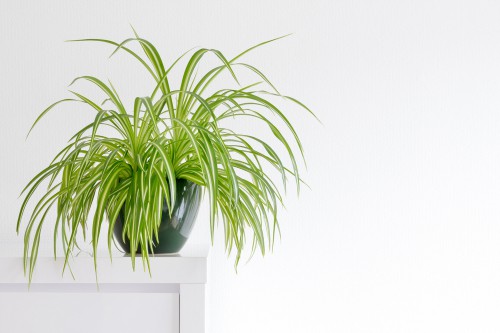Spider plants are popular houseplants known for their long, thin leaves that grow in a spider-like fashion, hence the name. They are relatively easy to care for, making them a great choice for beginners.
However, like any indoor plant, spider plants can experience problems that can cause them to wilt or die. In this article, we will discuss how to revive a dying spider plant and keep it healthy.
Understanding spider plant needs is the first step in caring for them. Spider plants thrive in bright, indirect light and require well-draining soil. Overwatering can lead to root rot, while underwatering can cause the leaves to wilt and turn brown.
It is important to water the plant only when the soil is dry to the touch. Spider plants also benefit from occasional fertilization and should be kept in a room with a temperature between 60-75°F.
Identifying problems in spider plants is crucial for reviving a dying plant. Common issues include overwatering, underwatering, too much direct sunlight, and pest infestations.
Dealing with pests, such as spider mites and mealybugs, is essential to keeping a spider plant healthy. In the next section, we will discuss how to revive a dying spider plant and maintain its health.
Key Takeaways
- Spider plants require bright, indirect light and well-draining soil.
- Identifying problems such as overwatering, underwatering, and pests is crucial for reviving a dying spider plant.
- Maintaining a spider plant’s health involves proper watering, fertilization, and pest control.
Related posts:
- How to Revive a Dying Rose Plant
- How to Revive a Dying Plant with Hydrogen Peroxide
- How to Revive a Dying Palm Plant
Understanding Spider Plant Needs
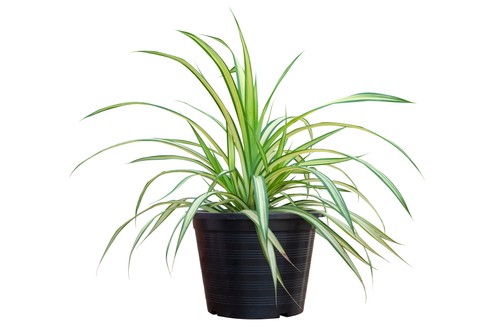
Spider plants are relatively easy to care for and maintain, but understanding their basic needs is crucial for their survival. In this section, we will discuss the watering requirements, soil and fertilizer needs, light and temperature preferences, humidity, and air quality that spider plants need to thrive.
1. Watering Requirements
Spider plants require moderate watering. Overwatering can lead to root rot, while underwatering can cause the leaves to wilt and turn brown. It is recommended to water spider plants when the top two inches of soil are dry to the touch. It is also essential to ensure that the soil has adequate drainage to prevent waterlogging.
2. Soil and Fertilizer Needs
Spider plants prefer well-draining soil that is rich in organic matter. A good potting mix for spider plants should contain peat moss, perlite, and vermiculite. Fertilizing the plant every two to three weeks during the growing season with a balanced fertilizer can help promote healthy growth.
3. Light and Temperature Preferences
Spider plants prefer bright indirect light, meaning they should be placed in a location where they receive indirect sunlight for most of the day. Direct sunlight can scorch the leaves, while too little light can cause the leaves to turn yellow. Spider plants prefer temperatures between 60-75°F and can tolerate temperatures as low as 50°F.
4. Humidity and Air Quality
Spider plants prefer a humid environment and can benefit from occasional misting. They can also help improve air quality by removing pollutants such as formaldehyde and xylene from the air. It is essential to avoid placing spider plants in areas with drafts or near heating or cooling vents as it can cause the leaves to dry out.
By understanding the basic needs of spider plants, you can provide them with the optimal growing conditions and help them thrive.
Identifying Problems in Spider Plants
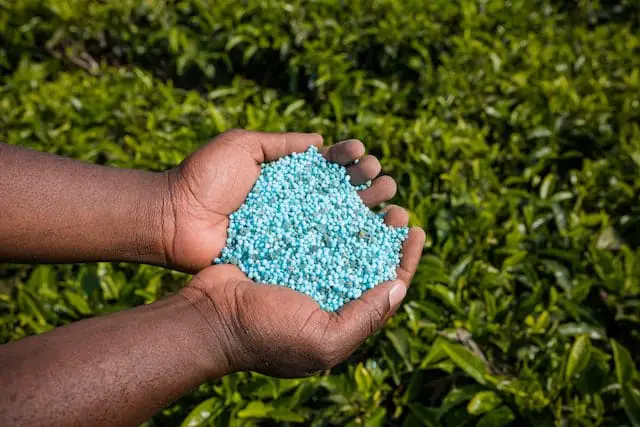
Spider plants are relatively easy to care for, but they can still experience problems that can cause them to wilt, turn brown, and eventually die. Here are some common problems that can affect spider plants and how to identify them.
1. Water and Fertilizer Issues
Overwatering or underwatering spider plants can cause problems. If the leaves are wilting or turning brown, it could be a sign of drought stress or root rot caused by too much water. If the leaves are yellowing, it could be a sign of underwatering.
Excess fertilizer can also cause problems. If the tips of the leaves are turning brown, it could be a sign of fertilizer burn. If there is no new growth, it could be a sign of too much fertilizer.
2. Light and Temperature Problems
Spider plants need bright, indirect light to thrive. If they are not getting enough light, the leaves may turn yellow and brown. If they are getting too much direct sunlight, the leaves may become damaged.
Spider plants also prefer temperatures between 60 and 75 degrees Fahrenheit. If they are exposed to temperatures outside of this range, they may experience environmental stress.
3. Signs of Root Rot and Other Diseases
Root rot is a common problem in spider plants. If the soil smells bad or if the plant is droopy and wilted, it could be a sign of root rot. Other diseases that can affect spider plants include fungal infections and bacterial infections.
4. Recognizing Environmental Stress
Spider plants can become stressed if they are exposed to extreme temperatures, drought, or other environmental factors. Signs of environmental stress include brown leaf tips, yellowing leaves, and droopy foliage.
Dealing with Pests
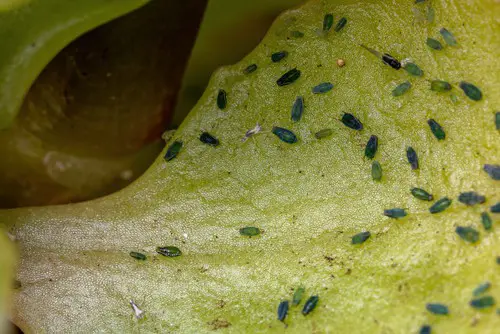
Identifying Common Pests
Spider plants are susceptible to a variety of pests that can cause significant damage if not dealt with promptly. Common pests that infest spider plants include spider mites, aphids, and whiteflies. Identifying the pest is the first step in controlling an infestation.
Spider mites are tiny, eight-legged creatures that are difficult to see with the naked eye. They often leave behind a fine webbing on the plant and cause yellowing or browning of the leaves.
Aphids are small, soft-bodied insects that cluster on the underside of leaves and stems. They secrete a sticky residue that attracts ants and can cause the leaves to curl or distort.
Whiteflies are small, moth-like insects that flutter around the plant when disturbed. They also secrete a sticky residue and can cause yellowing or stunted growth.
Natural and Chemical Control Methods
There are several natural and chemical control methods to deal with pest infestations on spider plants. One effective natural method is to use neem oil, which is derived from the neem tree and acts as a natural insecticide.
Mix a few drops of neem oil with water and spray the plant thoroughly, making sure to cover the undersides of the leaves. Repeat this process every few days until the infestation is under control.
Another natural method is to use a solution of dish soap and water. Mix a few drops of dish soap with water and spray the plant, making sure to cover the undersides of the leaves. The soap will suffocate the pests and prevent them from reproducing.
Chemical control methods include using insecticidal soaps or pesticides. Be sure to read the label carefully and follow all instructions when using these products. It is also important to note that some pesticides can harm beneficial insects, such as ladybugs and bees, so use them sparingly and only as a last resort.
Reviving a Dying Spider Plant

If your spider plant (Chlorophytum comosum) is looking wilted, yellowed, or generally unhealthy, it may be dying. Fortunately, there are several steps you can take to revive it and bring it back to its former glory.
1. Adjusting Watering and Fertilizing
One of the most common causes of spider plant death is overwatering or underwatering. To revive a dying spider plant, it is crucial to adjust its watering routine. The soil should be allowed to dry out between bouts of watering, about once every two weeks in winter and once a week in spring and summer.
It is also important to avoid using tap water, which may contain harmful chemicals such as chlorine and fluoride. Instead, use distilled or rainwater.
Fertilizing is also important for reviving a dying spider plant. A balanced water-soluble fertilizer can be applied once a month during the growing season. However, over-fertilizing can be harmful to the plant, so it is important to follow the instructions on the label.
2. Changing Light and Temperature Conditions
Spider plants require adequate sunlight to thrive. If the plant is not receiving enough light, it may become weak and prone to disease. Move the plant to a brighter location that gets indirect light, but avoid direct sunlight, which can scorch the leaves.
If the plant is exposed to low humidity or environmental stress, it may benefit from a hydrogen peroxide solution to help protect against disease.
Temperature is also an important factor in the health of a spider plant. The plant prefers temperatures between 60 and 75 degrees Fahrenheit. If the plant is exposed to extreme temperatures, it may become weak and susceptible to disease.
3. Addressing Soil and Potting Issues
Spider plants prefer well-draining soil that is rich in organic matter. If the soil is too compacted or does not drain well, it may lead to root rot or other problems. Repotting the plant in fresh soil may be necessary.
Pruning is also important for reviving a dying spider plant. Remove any yellow or damaged leaves with sharp, clean scissors. This will help the plant focus its energy on healthy growth.
4. Repotting
If the spider plant is severely root-bound, it may need to be repotted. Choose a pot that is one size larger than the current pot and fill it with fresh soil. Gently remove the plant from its current pot and loosen the roots.
Place the plant in the new pot and add soil around the edges, pressing down firmly to eliminate air pockets. Water the plant thoroughly and allow it to drain.
By following these steps, you can revive a dying spider plant and help it thrive once again.
Maintaining Your Spider Plant

Spider plants are easy to care for and make a great addition to any indoor garden. They are low-maintenance and can thrive in a variety of conditions. In order to keep your spider plant healthy and vibrant, it is important to establish a care routine that meets its needs.
1. Container and Soil
Spider plants can be grown in a variety of containers, including hanging baskets or traditional pots. It is important to choose a container with drainage holes to prevent stagnant water from building up and causing root rot.
When it comes to soil, spider plants prefer well-draining soil that is not too soggy. A good mix for spider plants is a combination of potting soil, perlite, and sand. This will provide adequate drainage while still retaining enough moisture to keep the plant healthy.
2. Watering
Spider plants are drought-tolerant and do not require frequent watering. It is important to allow the soil to dry out slightly between waterings to prevent overwatering and soggy soil. In general, spider plants should be watered once a week during the growing season and once every two weeks during the winter.
3. Fertilizer
Spider plants do not require a lot of fertilizer, but a buildup of fertilizer can harm the plant. It is important to use a balanced fertilizer and dilute it to half-strength. Fertilize the plant once a month during the growing season and stop fertilizing during the winter.
4. Plantlets
Spider plants produce plantlets that can be propagated to create new plants. These plantlets can be left on the parent plant or removed and planted in their own container. When removing a plantlet, be sure to cut it off close to the base of the parent plant to avoid damaging the roots.
By following these simple tips, you can keep your spider plant healthy and thriving. With a little care and attention, your spider plant will reward you with lush foliage and beautiful plantlets.
Frequently Asked Questions
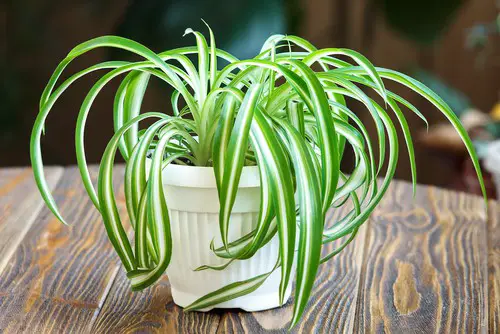
How do I revive a dying spider plant?
To revive a dying spider plant, you need to identify the problem first. The most common issues that cause spider plants to die are overwatering, underwatering, and lack of light.
Once you have identified the problem, take the necessary steps to fix it. For example, if your spider plant is overwatered, let the soil dry out before watering it again. If it lacks light, move it to a brighter spot.
What causes spider plants to die?
Spider plants can die due to various reasons such as overwatering, underwatering, lack of light, pests, and diseases. Overwatering can lead to root rot, while underwatering can cause the leaves to wilt and turn brown.
Lack of light can cause the plant to become leggy and weak, while pests and diseases can weaken the plant and cause it to die.
How often should I water a spider plant?
Spider plants prefer to be slightly dry between watering. You can water your spider plant once a week during the growing season and reduce watering during the winter months.
However, the frequency of watering depends on various factors such as the size of the pot, humidity, and the amount of light the plant receives. Always check the soil before watering and avoid overwatering.
What is the best soil for spider plants?
Spider plants prefer well-draining soil that is rich in organic matter. You can use a commercial potting mix or make your own by mixing equal parts of peat moss, perlite, and vermiculite. Avoid using heavy soils that retain too much water, as this can lead to root rot.
How can I tell if my spider plant is overwatered?
Overwatering can cause the leaves of a spider plant to turn yellow and wilt. The soil may also have a foul smell, and the roots may appear mushy and brown. To avoid overwatering, always check the soil moisture level before watering and ensure that the pot has proper drainage.
What is the best way to fertilize a spider plant?
Spider plants do not require frequent fertilization, but you can feed them once a month during the growing season with a balanced fertilizer.
You can also use a slow-release fertilizer that will provide nutrients to the plant gradually over time. Always follow the manufacturer’s instructions and avoid over-fertilizing, as this can burn the roots and damage the plant.

Hey, I’m Lisa and I’ve been an avid gardener for over 30 years. I love writing, talking and living in the garden! Feel free to connect with me on my socials below

